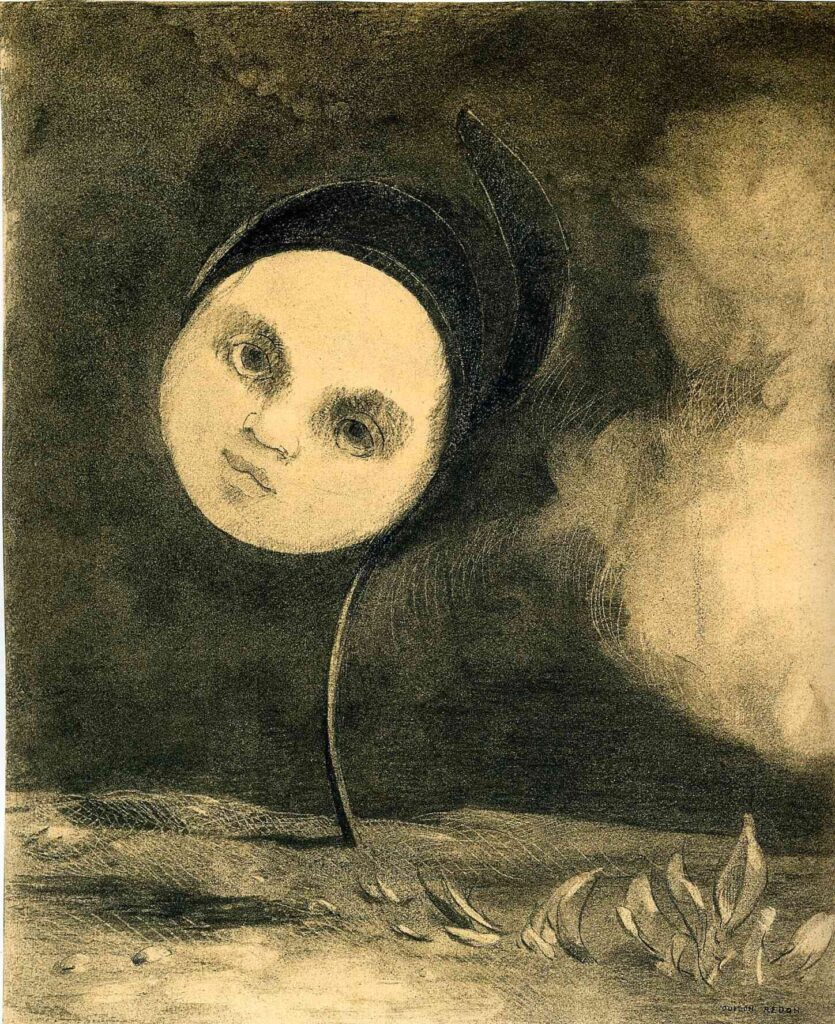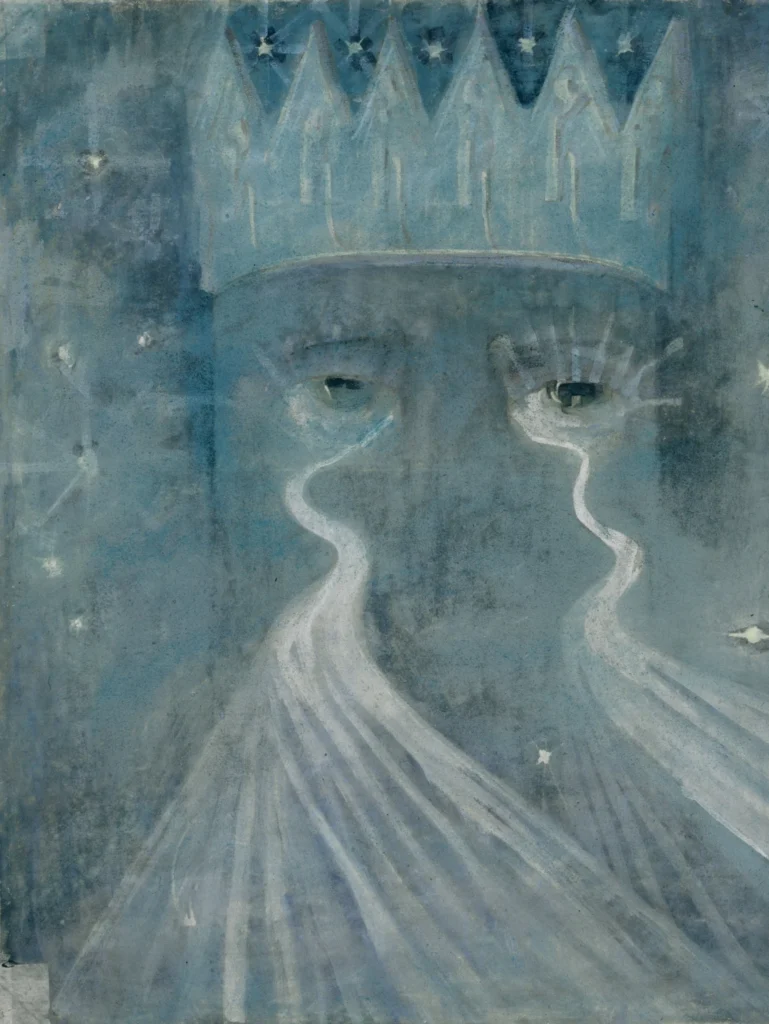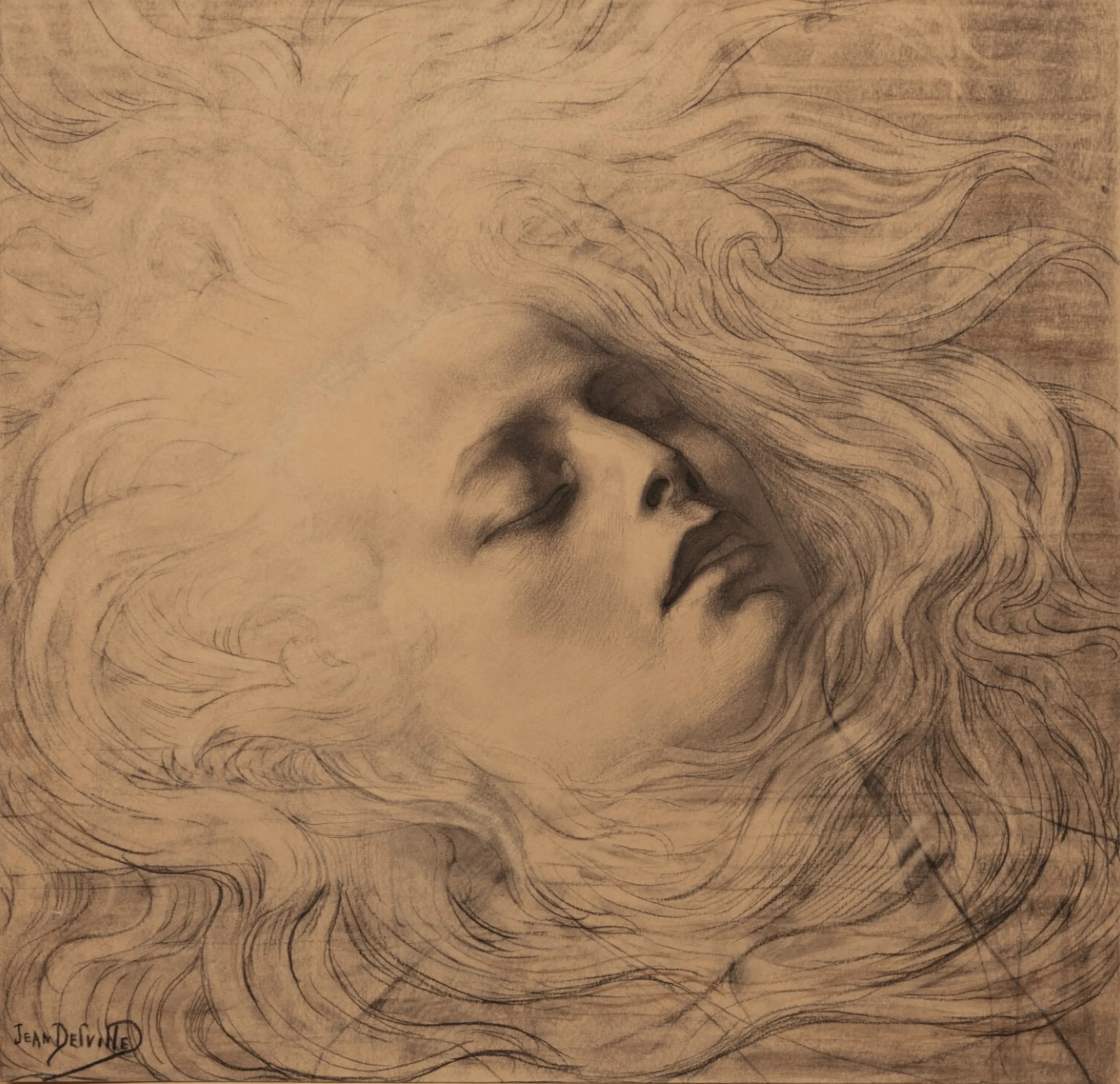Symbol
Jae Matthews emerges as a gnostic cipher, a coded presence for the exiled Feminine, her voice a point of contact where the fallen Sophia resists return and condenses as flesh and shadow. In the work of Boy Harsher, music is substance and liturgy, an apocryphal gospel written by both Jae and Augustus Muller for bodies kept at the margins. There is no redemption here; there is repetition, an eternity of longing, a tragic circle echoing figures from myth, Inanna who descends and remains, Persephone who reigns through darkness, Medea who seeks no pardon, only the depth of embodied experience. Within this field, Matthews does not sing for deliverance; she sings to imprint. The body becomes a Grail: vessel, wound, altar.
This radical stance is already present in the title of their first album: Yr Body Is Nothing. At first, the phrase seems to reject the flesh, to announce a desperate gnosis or a refusal of incarnation. Yet careful listening and the experience of the record as ritual reveal the reversal: this is a rite of reclamation. The body transfigured as “nothing” is not erased but set at the threshold, turned into a portal, a fertile void where the rejected Feminine may return, not as a promise of salvation but as an undeniable, visceral force. Here the Feminine does not appear as an object to be gazed at, but as subject of its own abyss, substance seeking no fixed form, claiming recognition for its power to dissolve and engender.
This tension between longing for return and the affirmation of exile is embodied in “Country Girl.” The song stands as an oracle of loss and limitation. Matthews’ voice, deep and veiled, intones the lament of the body held in matter. There is no escape, only the knowledge of confinement, and, paradoxically, a secret wisdom that rises from accepting suffering. In mythical terms, “Country Girl” mirrors Inanna’s descent: here the body recognizes its own enclosure and, within that acceptance, finds not redemption but lucidity. The body suffers and, in suffering, awareness is lit. Sadness becomes oracular clarity, a sibylline echo that never prophesies salvation, only the enduring mystery.
In “Send Me A Vision,” the experience shifts toward mystic invocation, a call to the Other, the Daimon, the guardian presence. No longer a matter of imprisonment, the song moves toward revelation. It becomes a ritual passage, an invocation for vision and meaning beyond the limits of matter. The video, drawing on Wim Wenders’ Wings of Desire, places Matthews in a lineage of intermediaries. Neither human nor divine, but messengers who stand at the meeting-point of flesh and spirit. This plea for vision works as a gnostic and alchemical gesture: an urgent request for sign or epiphany. In this space, the body becomes an open window, a polished mirror, a channel between planes. The moment is hermetic, a true conjunction of opposites: Sophia and angel, flesh and breath, sorrow and the longing to ascend.

Within Jae Matthews, the Taurus–Scorpio axis is not just an astrological undertone, but a structuring mythic polarity. Taurus is associated with substance, pleasure, the mysteries of incarnation and embodiment; the verdant, fertile power of the earth, the sanctuary of the senses, the garden as both paradise and temptation. Scorpio, in direct opposition, governs secrets, death, Eros as annihilation, the urge to pierce the veil, and the mysteries that lie beneath or beyond form. In myth, this polarity expresses the dialectic between Demeter and Persephone, Aphrodite and Hades, the body’s feast and the descent into the shadow-world.
In Matthews’ music and persona, this polarity is never resolved. The voice moves as if between sanctum and underworld, every line carrying both the promise of touch and the certainty of loss. In the language of the Mysteries, Taurus marks the field of ritual union (the Hieros Gamos, the sacred marriage where body and spirit are entwined), while Scorpio is the passage through dissolution, the necessary surrender of form for transformation. Where many artists seek transcendence by denying the body, Matthews asserts the body as threshold, even as she sings the ache of separation and the inevitability of decay. The music thus becomes a modern echo of Eleusis: always between the wheat and the grave, the embrace and the letting go.
Helenically, this axis is mapped in the Persephone myth: abducted into the underworld (Scorpio), returning cyclically to bring fertility to the world (Taurus). Matthews’s work never allows for a full return. The songs vibrate with the tension of an eternal descent and fleeting emergence, so that pleasure is always charged with risk, and pain with creative potential. The Taurus–Scorpio axis becomes, in Boy Harsher, a labyrinth for the listener, where each repetition of rhythm and lyric mirrors the soul’s movement between desire for embodiment and yearning for dissolution. In this sense, she is neither priestess of the flesh nor pure shade, but a living cipher of the threshold. An initiatrix for whom every touch is also a trace of absence, every lyric a signpost to the night within the body.

Ritual
Around the work of Boy Harsher, there is a symbolic body that must be recognized before any attentive listening. For those wishing to penetrate this field, the preparation involves a retreat into the night hour, a gesture of separating oneself from common noise and dressing in black, silver, or dark red, colors reflecting exile, threshold, and the fertile blood of experience. The space is illuminated in duality: a white candle placed to one side, a black candle on the other and, between them, a mirror facing upwards at the center, where rests an object of cold metal, discreet, without declared history. This silent and contained configuration delimits the perimeter of the rite, suggesting to the body a passage between states of wakefulness and dream.
When the music begins, the body is not invited to interpret but to serve as a receptacle. The sound, dense and incarnate, passes through sensory layers, opening zones of sadness, desire, or emptiness, according to the internal landscape of the listener. There is no immediate search for meaning, nor expectation of comfort; the time is one of suspension, allowing the sonic matter to act. Each track is treated as a passage, a fragment of the greater symbolic body, requiring of the listener only a devotional presence, one that allows the experience to settle, ferment, and transform into silence or word.
At the end of the rite, the image of the mirror and metal persists: mute witnesses to a discreet alchemical process. The object remains as a relic of the experience, kept until a new cycle of listening. Thus, the music of Boy Harsher reveals itself not as entertainment but as a slow work upon flesh and shadow, operating in a zone where art is offering, the body is altar, and the night laboratory of the invisible.
